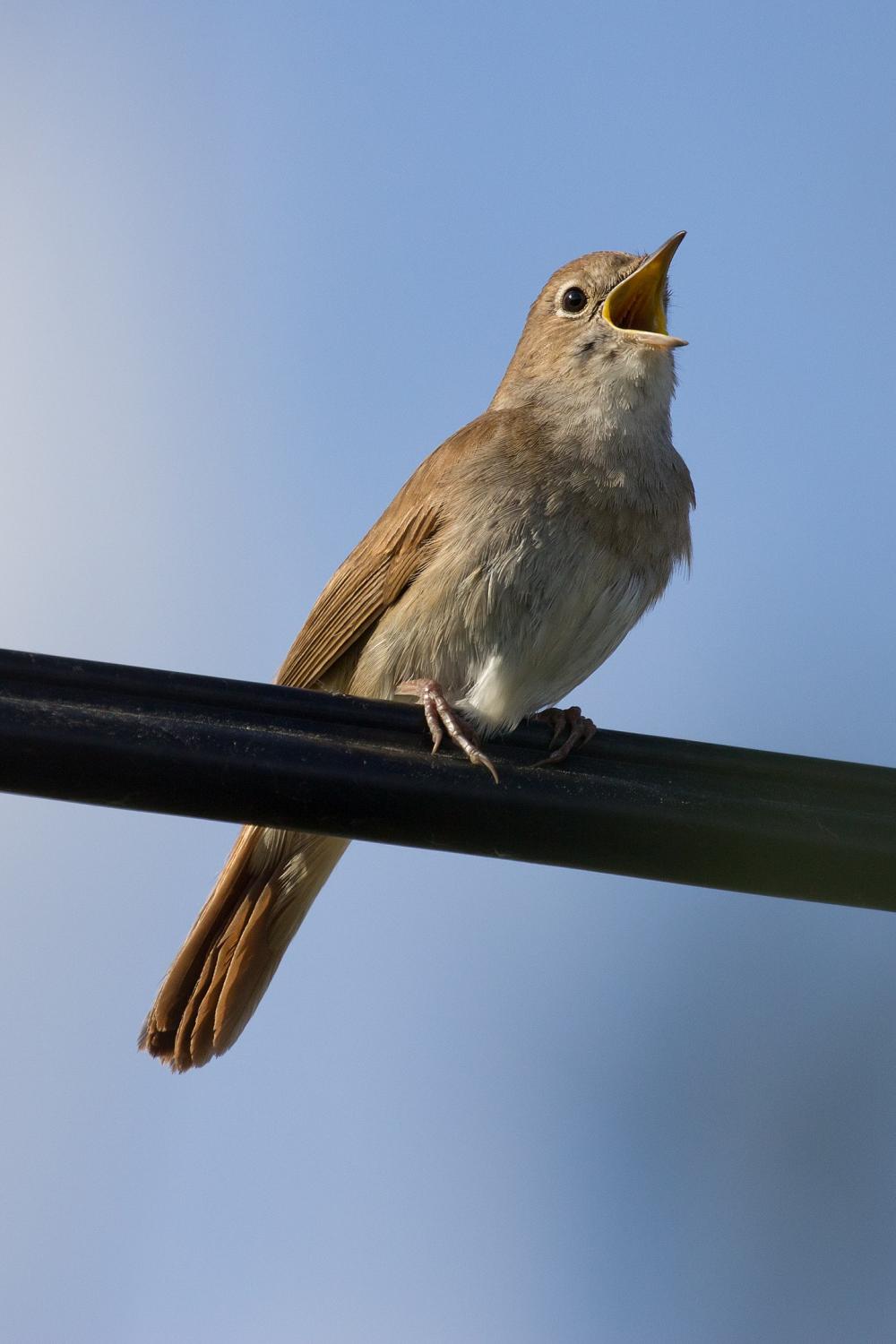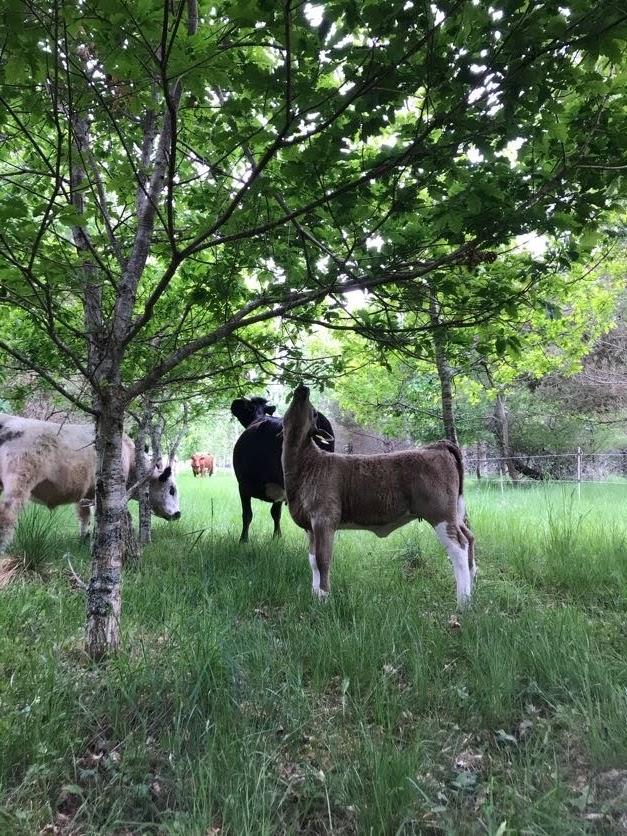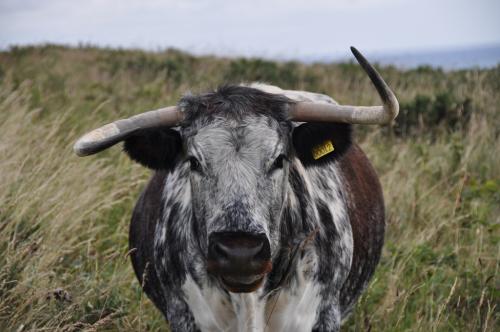‘You do not like them. So you say. Try them! Try them! And you may. Try them and you may, I say.’
I suspect farmers feel like they receive plenty of advice served up in the relentless manner of Sam in Dr Seuss’ children’s book, Green Eggs and Ham. Tellingly, the well-meaning advisors are frequently not farmers.
Livestock farmers often feel unfairly criticised by press coverage, usually dwelling on negative environmental and human health impacts of red meat production, while underplaying the varied benefits of livestock farming, especially here in Scotland. Increasingly vocal environmental commentators are trying to target farming because of the acknowledged role of agriculture in climate change and biodiversity loss; two issues that are now widely seen as emergencies and accepted as being deeply interconnected. And this is not just coming from the green lobby. The United Nations says that agriculture produces about a quarter of global greenhouse gas emissions. In Scotland, agriculture contributed just under a fifth of total emissions in 2018. What you put on your plate matters, and that is without even considering transport, processing and food waste. However, it is important to counterbalance this negative view of farming by saying it can, and should, be a force for good in terms of nature and climate.
The environmental impact of red meat is a particularly charged aspect of the debate, and anyone who gets involved should expect the farming community to rightly ask, ‘what’s your beef?’ The UK farming sector are attempting to redress the balance and are actively amplifying the positive messages about the red meat industry. I’ll nail my colours to the mast and say that I am approaching this as someone deeply concerned for nature and I think that livestock farmers, particularly beef farmers, need to recognise that attitudes to eating red meat are changing. The seriousness of global warming is starting to register with the public. We increasingly accept that individual behaviour and the choices we make are part of the problem, but are also part of the solution. These days, you can’t avoid advertising selling the green option or demonstrating a company's green credentials. Some of this is just corporate greenwashing but the drip-feed of information about the environment and what we, as individuals, can do is becoming a steady flow and hard to ignore.
You know attitudes are changing when global fast-food chains and supermarkets start advertising plant-based burgers and meat analogue products. The trend is clear, according to the OECD Europeans are eating 10% less red meat than they were in 2000 with a similar trend being observed in the UK between 2008 and 2019. And we’re not just being asked to do this for the planet, there is evidence it is better for our health too, although there is still some debate about this. In addition to changing eating habits, the statistics about nature’s decline are truly shocking. Based on the Biodiversity Intactness Index, the UK is one of the most nature-depleted countries on the planet, having lost an estimated 50% of its biodiversity since the Industrial Revolution. However, it is too simplistic to view farming as the problem, and the position I take on red meat is to support farmers who are adopting sustainable methods and regenerative principles.
There are a number of definitions of ‘Regenerative Farming,’ but if it is about applying principles that make farming sustainable, what does that mean in practical terms? Although there are many regenerative practices that can be applied, the key principle is to restore soil health. Soils ought to be alive, albeit with lifeforms that are mostly invisible to the naked eye. In short, farmers must aim to support functioning webs of interconnected life – ecosystems – built from the soil up. It is not hard to understand how this benefits nature beyond the soil. What’s less obvious is how this also benefits the climate. Plants remove carbon dioxide from the atmosphere, which is ultimately locked up in soil when plants die, via the action of soil microbes – fungi and bacteria. The incredible result of all this carbon draw down is that soil contains three times more carbon than the atmosphere. Farmers may not realise it, but they determine the amount of carbon stored on their land by their farming practices.
Farming can clearly deliver environmental goods, but do regenerative practices make business sense? Interestingly, the pioneering livestock farmers who have turned their backs on the quick fix of fertiliser and supplementary feed in favour of working with nature within the limits of their land’s productivity, are also finding it can be a good financial move. Conventional wisdom would say that this will lead to smaller yields and, by extension, reduced profits. That the reverse is often true is beginning to generate wider interest. What matters most is the profit margin. Put into the words of wise farmers, ‘yield is vanity, profit is sanity.’
To fully appreciate how increased profits can come from reduced inputs we need to understand how natural grassland ecosystems work. Just consider the vast herds of wild ruminant grazers that still roam the African plains today and did roam the American prairies until Europeans arrived. Although this seems unrelated to British livestock farming, there is a connection. Ecologists have reappraised what Europe was like before agriculture. The idea that there was a dense wildwood has now been largely rejected and replaced by a more familiar vision of a landscape consisting of a mosaic of grassland, scrub and forest, supporting herds of ruminant grazers – wild cattle, bison and deer – constantly on the move to avoid predators and to find fresh grazing. If you imagine a deer park with grassland and scattered trees, you’d be closer.
Thought of in this way, grass-fed cattle can be seen as a natural, and indeed critical, part of the landscape and ecology. From an ecological perspective, grazing is essential to maintain the mix of open and closed habitats and prevent a succession to woodland. The physical diversity of habitat mosaics and the presence of edges and transitions between habitats is what enables them to support many more species than a single habitat. The dynamic closing and opening of the canopy, mediated by the interplay of grazing and succession, is what really matters at the landscape scale. This is particularly true for animals that rely on more than one habitat within the mosaic. The whole ecosystem really is more than the sum of its parts.
But where does livestock farming come into what sounds like ecological theory? By working with hardy, adaptable breeds of livestock, such as Aberdeen Angus cattle, you can treat them as proxies for the original wild grazers and allow them to range over the landscape in what amounts to ranching. The animals can thrive without inputs, such as supplementary feeding and veterinary medicines, saving farmers considerable expense and reducing impacts on the environment. The key is keeping the animals moving so that grassland is not over grazed. On many farms this means controlling the movement of livestock with electric fences. Stocking density is only part of the picture because productivity is determined by how the land is grazed. It is important to avoid over grazing because grassland in this state becomes less productive. The aim is to constantly monitor and adjust grazing to stay in the sweet spot of highest natural productivity.
A version of regenerative livestock farming has been developed at the Knepp Estate in West Sussex since 2001, with remarkable results for nature. According to their website, species that have been showing precipitous declines, such as nightingale and turtledove, are increasing and general species diversity and abundance has sky-rocketed from the low base of a typical conventional farm. Crucially, having struggled to turn a profit as an arable farm, even with serious investment in technology, Knepp has become a profitable business producing ‘wild range’ organic meat. In the words of owners, Charlie Burrell and Isabella Tree, they ‘took their hands off the steering wheel’ and allowed a process-led ‘wilding’ to occur. In other words, they were not aiming to manage for any single species, just sustainable culling.

The nightingale population in Britain has plummeted and the Knepp Estate is one of the few places where numbers are increasing. Credit: Nightingale by Carlos Delgado CC BY-SA 4.0.
To be clear, Charlie and Isabella still regard what they do as farming. They produce premium quality, high welfare organic meat that commands a premium price without the cost of inputs. They do this sustainably and, at the same time, the carbon locked up in their land is increasing as natural processes, such as the actions of dung beetles and soil microbes, recover. It is not clear to what extent this carbon storage counterbalances the inevitable livestock methane belches – methane being a potent greenhouse gas. But monitoring suggests that their soil carbon has more than doubled since they began their wilding journey. Compared to intensive livestock farming with feed and fertiliser, both of which have real carbon footprint issues, this looks like the gold standard for eco-friendly meat. The catch, if there is one, is that less meat is produced, although the 75 tonnes annual live weight produced at Knepp from 3,500 acres is not to be sniffed at. The answer to this challenge is that we must all eat less but 'better' meat and should aim for the highest environmental standards when we treat ourselves.
Taken globally, beef has earned itself a bad name for its environmental impact. Some beef, and meat production more generally, is doing terrible things to the planet. The point is that beef from an extensive, zero input regenerative system that supports nature and stores carbon is an entirely different product from beef raised on newly deforested land or, as is the case in some countries, in feedlots without a blade of grass in sight. Even nature conservationists have been staggered by what has been achieved at Knepp in terms of nature recovery in just a few years. It is fair to say that the experience at Knepp provides lessons for both farming and conservation.
Not every farm will want to go as far as Knepp. But cutting inputs and employing better grazing management, to provide recovery periods, would be a step towards sustainability. There is certainly a network out there in the UK to support more environmentally conscious farming. The Pasture-Fed Livestock Association (PFLA) is promoting the benefits of grass-fed animals for biodiversity, carbon storage, human health and animal welfare. However, it’s important to remember that farmers are only one half of the equation. All of us are consumers and we all need to understand the impacts, good and bad, of the food we buy.
Nikki Yoxall is a farmer on the Scottish steering group of the Nature Friendly Farming Network (NFFN) and works with the PFLA. She farms cattle in northeast Scotland and is passionate about connecting people with their food. Nikki’s farming involves thinking regeneratively and putting ecology at the centre of decision making. By doing this she says, ‘we can create habitats and food sources for wildlife as well as successful farming businesses.’ In her view ‘farming for diversity and abundance means increased ecological functioning which is key for resilient food production in a changing climate.’

Cattle and trees in silvopasture in northeast Scotland. Credit: Nikki Yoxall.
The NFFN is unusual in that it recognises the importance of building a broad coalition of support for a vision of the future that ensures our countryside is productive and, in their own words, ‘bursting with wildlife.’ With UK agricultural policy shifting away from support payments based on quantity, such as land area or livestock numbers, and towards a ‘public money for public goods’ system that recognises and rewards environmental stewardship, there is a real opportunity to make nature-friendly farming mainstream.
In the UK uplands, where much of the grazing is classed as Area Under Natural Constraint (ANC) and only really suitable for livestock grazing, there are considerable opportunities for more nature-friendly meat production. But we must support the necessary changes in farming practice. For example, silvopasture is the intentional integration of livestock and woodland. Much of our forestry has been focused on the uplands, but we should not restrict our thinking to livestock or trees, rather we need to see the benefits of combining livestock and trees. There is also a need to raise awareness, so consumers understand the multiple benefits of sustainable livestock and are prepared to pay a bit more and consume (and waste) a bit less. Like Sam in Dr Seuss’ book, those of us who like green eggs and ham and beef need to become committed advocates for nature-friendly farming.
Max would like to thank Nikki Yoxall, Grampian Grazers and Philip Skuce, Moredun Research Institute for their valuable input which has shaped this blog post.
